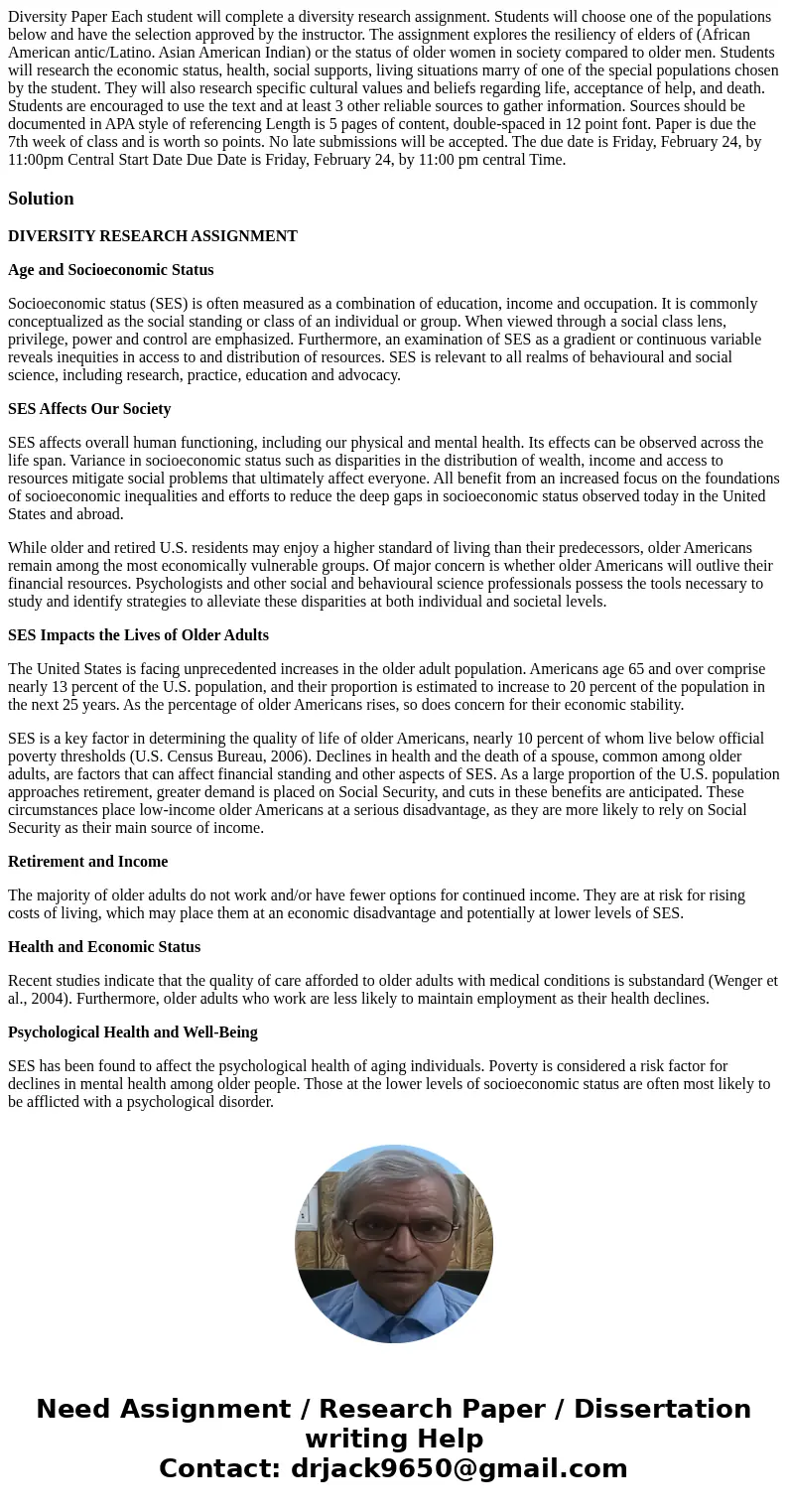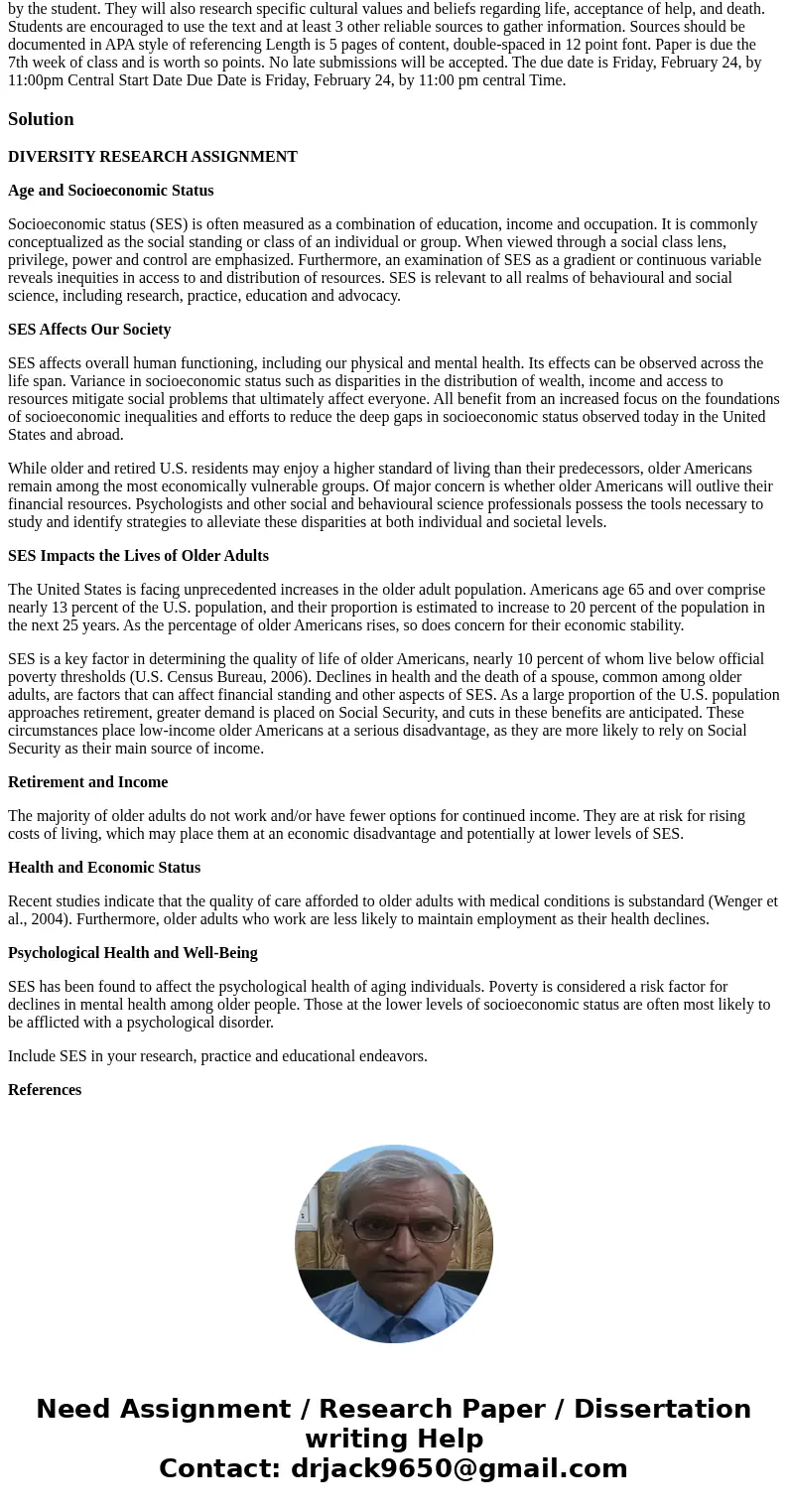Diversity Paper Each student will complete a diversity resea
Solution
DIVERSITY RESEARCH ASSIGNMENT
Age and Socioeconomic Status
Socioeconomic status (SES) is often measured as a combination of education, income and occupation. It is commonly conceptualized as the social standing or class of an individual or group. When viewed through a social class lens, privilege, power and control are emphasized. Furthermore, an examination of SES as a gradient or continuous variable reveals inequities in access to and distribution of resources. SES is relevant to all realms of behavioural and social science, including research, practice, education and advocacy.
SES Affects Our Society
SES affects overall human functioning, including our physical and mental health. Its effects can be observed across the life span. Variance in socioeconomic status such as disparities in the distribution of wealth, income and access to resources mitigate social problems that ultimately affect everyone. All benefit from an increased focus on the foundations of socioeconomic inequalities and efforts to reduce the deep gaps in socioeconomic status observed today in the United States and abroad.
While older and retired U.S. residents may enjoy a higher standard of living than their predecessors, older Americans remain among the most economically vulnerable groups. Of major concern is whether older Americans will outlive their financial resources. Psychologists and other social and behavioural science professionals possess the tools necessary to study and identify strategies to alleviate these disparities at both individual and societal levels.
SES Impacts the Lives of Older Adults
The United States is facing unprecedented increases in the older adult population. Americans age 65 and over comprise nearly 13 percent of the U.S. population, and their proportion is estimated to increase to 20 percent of the population in the next 25 years. As the percentage of older Americans rises, so does concern for their economic stability.
SES is a key factor in determining the quality of life of older Americans, nearly 10 percent of whom live below official poverty thresholds (U.S. Census Bureau, 2006). Declines in health and the death of a spouse, common among older adults, are factors that can affect financial standing and other aspects of SES. As a large proportion of the U.S. population approaches retirement, greater demand is placed on Social Security, and cuts in these benefits are anticipated. These circumstances place low-income older Americans at a serious disadvantage, as they are more likely to rely on Social Security as their main source of income.
Retirement and Income
The majority of older adults do not work and/or have fewer options for continued income. They are at risk for rising costs of living, which may place them at an economic disadvantage and potentially at lower levels of SES.
Health and Economic Status
Recent studies indicate that the quality of care afforded to older adults with medical conditions is substandard (Wenger et al., 2004). Furthermore, older adults who work are less likely to maintain employment as their health declines.
Psychological Health and Well-Being
SES has been found to affect the psychological health of aging individuals. Poverty is considered a risk factor for declines in mental health among older people. Those at the lower levels of socioeconomic status are often most likely to be afflicted with a psychological disorder.
Include SES in your research, practice and educational endeavors.
References


 Homework Sourse
Homework Sourse